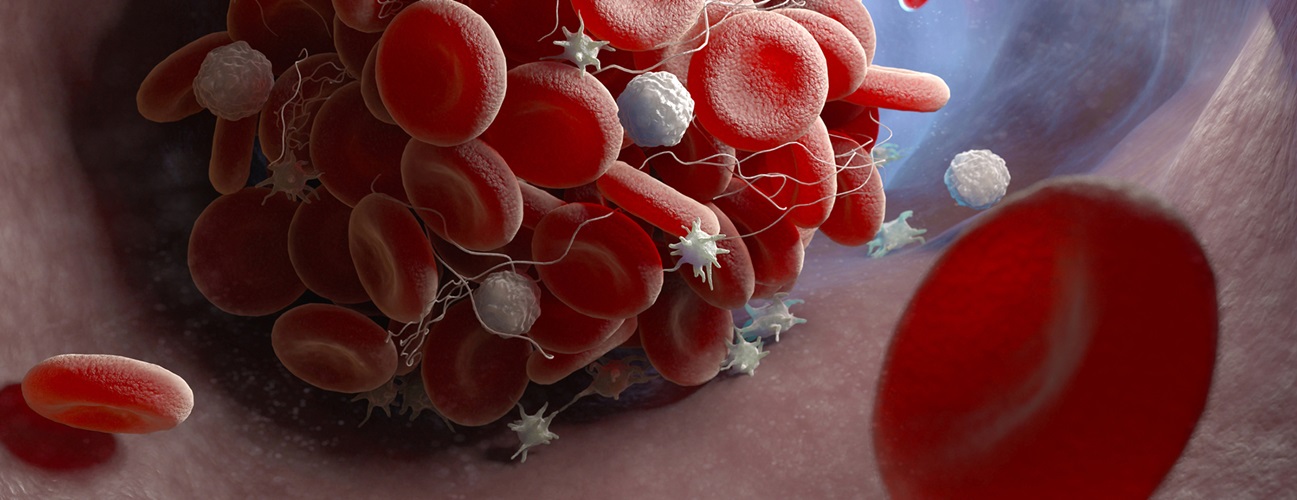


“Platelets are the cells that circulate within our blood and bind together when they recognize damaged blood vessels,” says Marlene Williams, M.D., director of the Coronary Care Unit at Johns Hopkins Bayview Medical Center. “When you get a cut, for example, the platelets bind to the site of the damaged vessel, thereby causing a blood clot. There’s an evolutionary reason why they’re there. It’s to stop us from bleeding.”
Platelets, the smallest of our blood cells, can only be seen under a microscope. They’re literally shaped like small plates in their non-active form. A blood vessel will send out a signal when it becomes damaged. When platelets receive that signal, they’ll respond by traveling to the area and transforming into their “active” formation. To make contact with the broken blood vessel, platelets grow long tentacles and then resemble a spider or an octopus.
A normal platelet count ranges from 150,000 to 450,000 platelets per microliter of blood. Having more than 450,000 platelets is a condition called thrombocytosis; having less than 150,000 is known as thrombocytopenia. You get your platelet number from a routine blood test called a complete blood count (CBC).
The medical term for having too many platelets is thrombocytosis, and there are two types:
When there are symptoms, they include spontaneous blood clots in the arms and legs, which if untreated can lead to heart attack and stroke. In severe cases, the patient might have to undergo a procedure called a platelet pheresis. This lowers the platelet count by removing the blood, separating out the platelets, and returning the red blood cells back to the body.
With secondary thrombocytosis, the symptoms are usually related to the associated condition. For example, if you have an infection or anemia, you treat those conditions and the platelet count comes down.
When you don’t have enough platelets, it’s called thrombocytopenia. Symptoms include easy bruising, and frequent bleeding from the gums, nose, or GI tract. Your platelet count drops when something is preventing your body from producing platelets. There are a wide range of causes, including:
If you have too many platelets, it can increase your risk for clotting. But often your cardiovascular risk has more to do with platelet function than platelet number. For example, you could have a healthy number of platelets, but if they’re sticking together too much it can increase your chance of having a heart attack or stroke.
Too many platelets, too few platelets, abnormally functioning platelets, and related conditions such as blood clots, strokes, and heart attacks can be inherited. So it’s a good idea to alert your doctor when there’s a family connection.
“Although you may feel fine, your physician might want to keep a close eye on you and investigate whether or not you need medications to reduce the functioning of your platelets,” says Williams. “The most common blood-thinning medication is aspirin, although recent studies have shown that women under 65 who are otherwise healthy do not receive the same benefit from aspirin as men do. There is no concrete answer to that yet.”

If you have a new or existing heart problem, it's vital to see a doctor. Our heart health checklist can help you determine when to seek care.